Love is in the air for the birds and the bees… but what about the plants?
The animal kingdom is full of strange, endearing, and even alarming courtship rituals and mating habits. Yet we don’t hear much about the bizarre reproductive strategies that plants use to produce the next generation.
As it turns out, they’re equally weird. And diverse. And sometimes horrifying.
The corpse flower smells like rotting meat. Strangler figs hitchhike on birds and then entomb their host trees. And many species, like aspens, clone themselves over and over.
But in my opinion, orchids take the prize for weirdest plant sexytimes.
Don’t believe me? To start, even the word orchid originates from the Greek word for testicle.
English botanist John Lindley coined the word “orchid” after the Orchis genus, one of several in the Orchidaceae family. It turns out that some species in Orchis genus have a pair of twin tubers that are shaped like, well, testicles. (And that’s not the first time this unusual association has been made. Some orchids were called “bollockwort” in Middle English, a combination of the words for “testicle” and “plant”.)
Etymology aside, orchids deploy a plethora of weird strategies to get down and get rooty. Read on for some of our favorites…
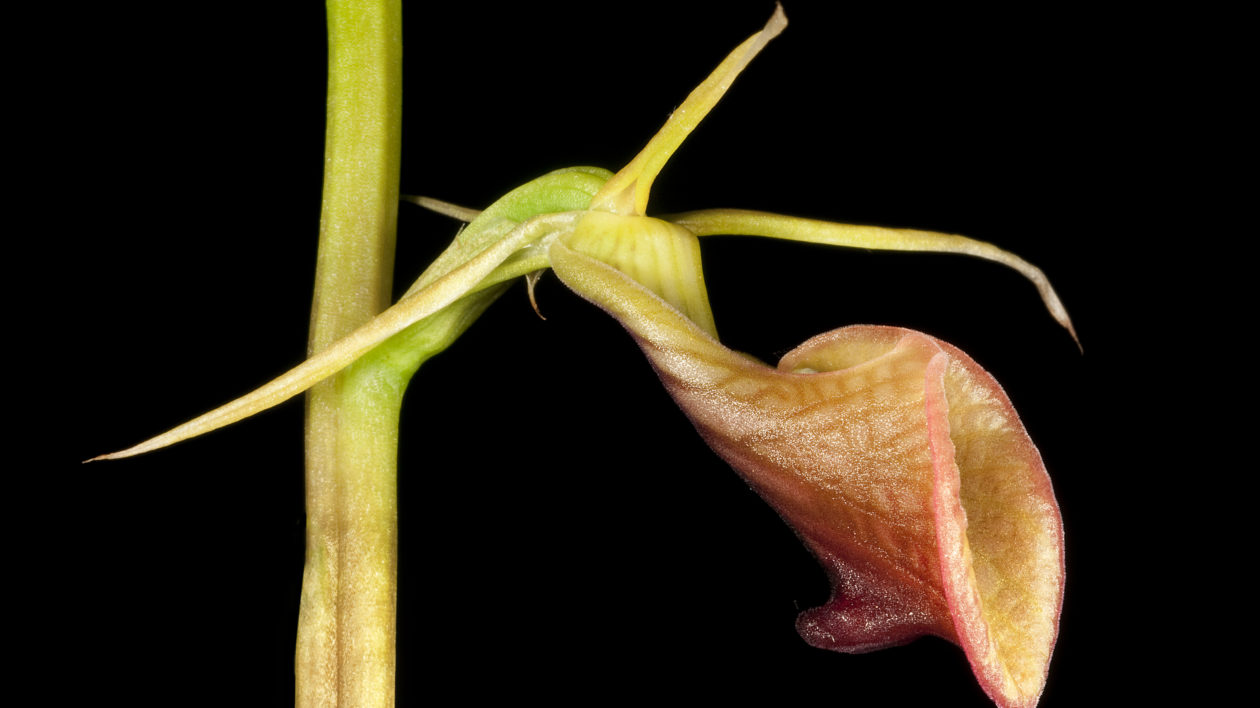
Trick Insects Into Mating With You
This isn’t the first time we’ve written about Australian tongue orchids. Species in the Cryptostylis genus have flowers that so closely resemble the female dupe wasps that male wasps are fooled into mating with the flower — to the point of ejaculation. (And yes, there is video.) As the male wasps do the deed, they get covered in orchid pollen that is then transferred to other flowers as the male continues on his sexual escapades.
This trick isn’t unique to the tongue orchids; several species in the Ophrys genus employ the same strategy. The bee orchid (Ophrys apifera) specializes in tricking bees, while the fly orchid (Ophrys insectifera) does the same for digger wasps.
You might be wondering why these plants go to such efforts to dupe their pollinators into actually attempting to mate with their flower, when other flowers get by attracting insects with a feast of nectar.
For the tongue orchids, scientists suspect that the sexual deception reinforces the evolutionary benefit by messing with the wasp population’s gender balance. Let me explain: Wasps reproduce by haplodiploidy, which means that female wasps are produced from an egg and a sperm, while male wasps are produced from just an egg. A male wasp that wastes its sperm mating with a flower has less left over for the ladies, so more eggs go unfertilized, which produces more male wasps to help pollinate the next generation of flowers.
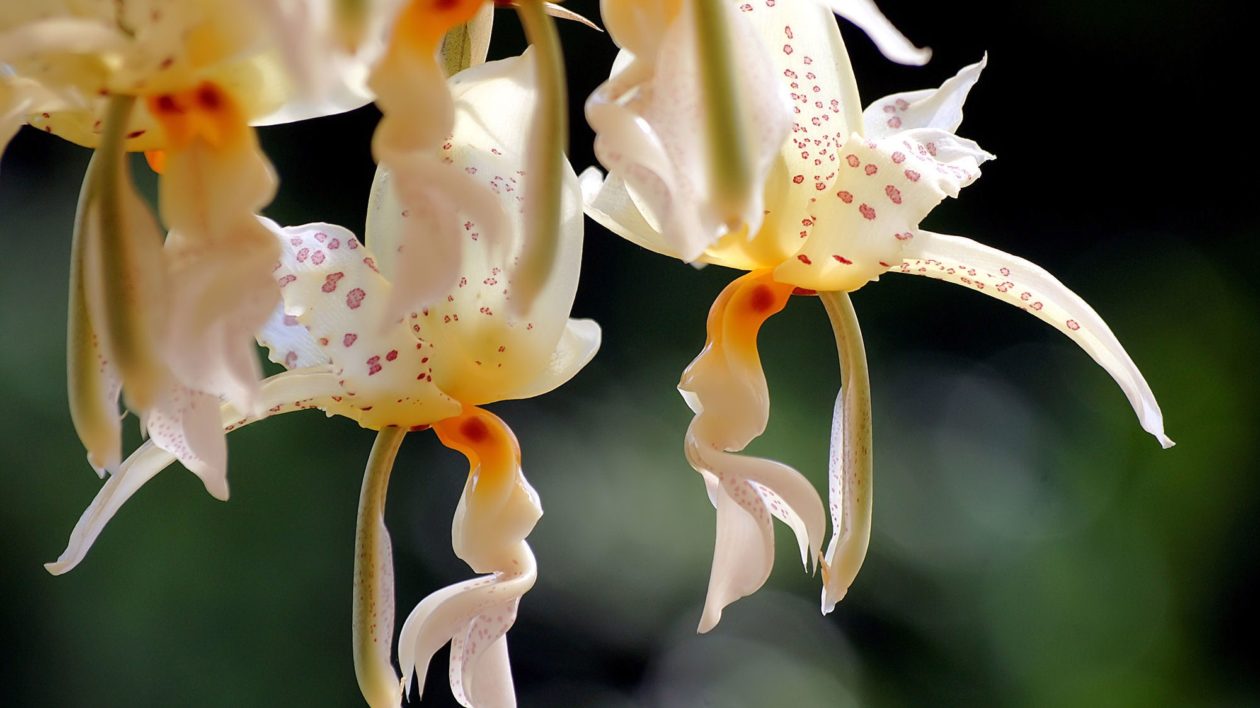
Smell Like a Lady Insect. Or A Dying Aphid.
Many orchid species use scent to attract pollinators. Another Aussie variety, the bird orchid (Chiloglottis reflexa) mimic both the looks and the scent of female thynnine wasp. (Thynnine wasps have a pretty weird sex life even when not being tricked by orchids. The females can’t fly, so the males pick them up and mate with them in flight.)
Scientists discovered that another species in the same genus, Chiloglottis trapeziformis, uses UV-B light to create the compounds that mimic the wasp sex pheromones. (UV-B light is the same wavelength that can leave you with a nasty sunburn at the beach.) This process requires an enormous amount of energy, so the orchid evolved petals that block UV light from the scent-producing structures until the flower opens and is ready for pollination.
Then there are the Stanhopea orchids of Central and South America. This genus specializes in attracting orchid bees, a group of metallic green, chunky bee species that collect plant scent to mark their territory and use in mating displays. (Think sexy cologne, but for bees.)
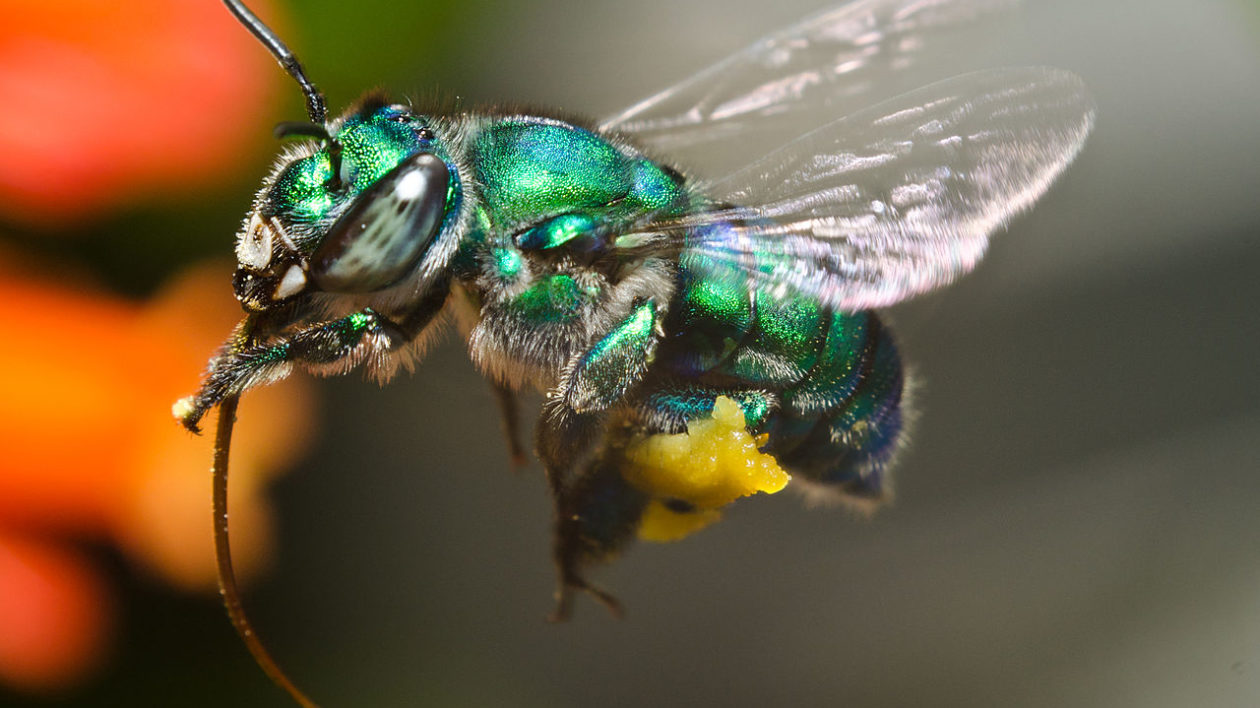
Male orchid bees have specialized legs that can collect plant scent compounds and then store them in leg sacs. To gather the Stanhopea orchid scent, the bees must clamber up through an obstacle course of twisted flower petals, bumping into pollen as they go.
Dracula lafleuri, found in the cloud forests of Ecuador, take a different approach. Instead of mimicking an insect’s sexual partner, they look (and smell) like mushrooms. Yes, mushrooms. Their spotted petals resemble a species of fungi where flies congregate and lay eggs. Combine that with a deceptive, mushroomy scent, and the flies can’t resist. (Scientists discovered this deception by using fake, 3-D printed silicone orchid flowers.)
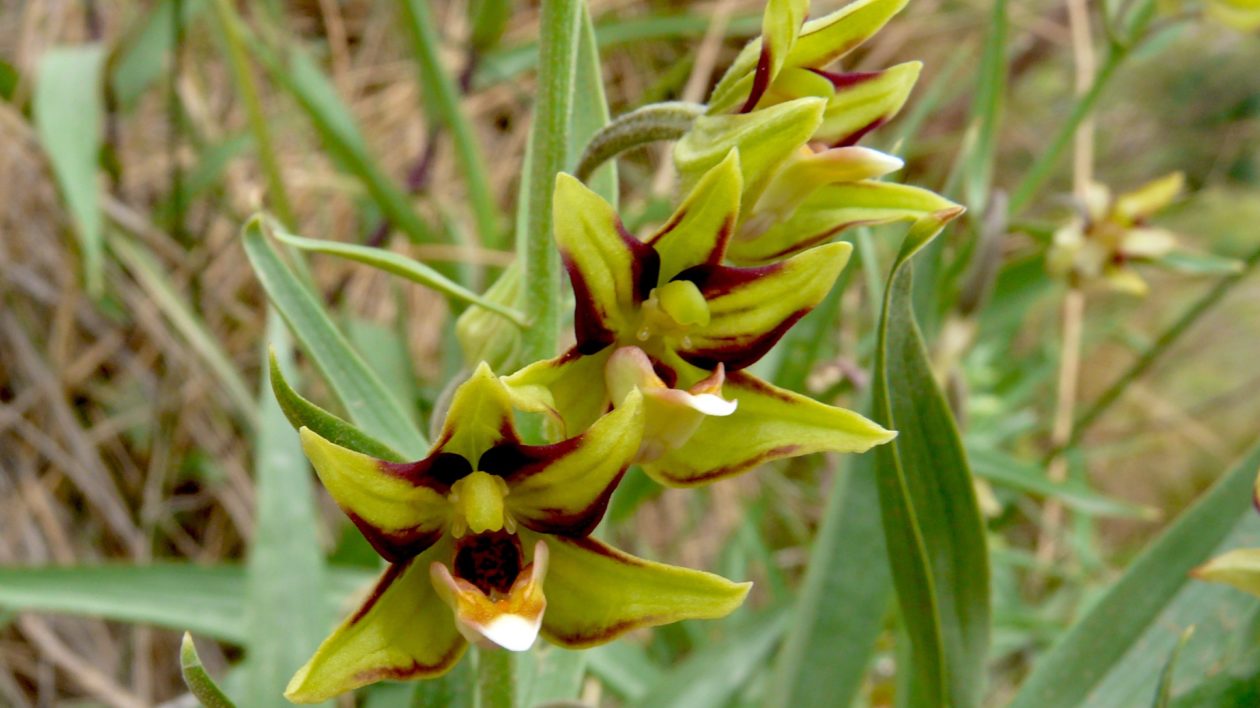
The eastern marsh helleborine (Epipactis veratrifolia) goes one step further by advertising (fake) insect happy hour. These orchids — native to the Middle East, Africa, and Asia — are pollinated by several species of hoverfly. The flies typically feed on aphids, which when attacked release alarm chemicals to alert others of their kind to danger.
The helleborine flowers mimic the scent of aphid alarm chemicals, and so the female hoverflies gather around the flowers, thinking they’ve found a tasty meal. They’re followed by the male flies, who just want to find a mate.

Set a Spring-loaded Booby Trap
Charles Darwin described the Catasetum saccatum as “the most remarkable of all orchids.”
Here’s why: The Catasetum stores its pollen on a spring-loaded sticky disc at the back of the flower. When an unsuspecting insect lands and touches an antenna-like trigger, the orchid hurls the pollen towards the insect with considerable force. (When Darwin himself poked one flower with a whalebone, the projectile pollen landed on a windowpane 3 feet away.) Talk about making the first move.
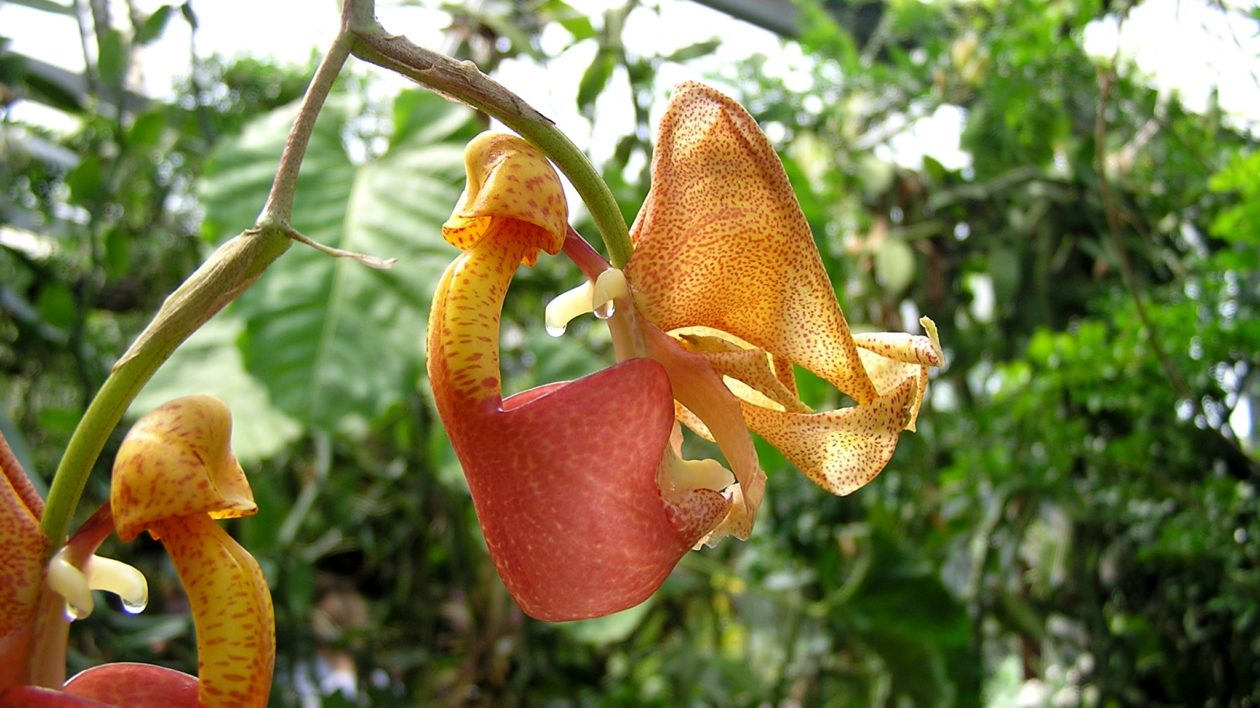
Temporarily Kidnap Your Pollinators
This is where pollination takes a dark turn. Orchids in the Coryanthes genus also rely on orchid bees for pollination, but they set a very different kind of trap.
Instead of a petal obstacle course, their flowers form the shape of a smooth-sided bucket filled with sticky secretions. As the male bees fly in to gather scent compounds, some slip down the side of the bucket and get covered in liquid.
Thankfully, the plant provides an escape hatch: Part of the bucket is lined with knob-like structures to help the bee climb into a narrow tube. This tube constricts as the insects enter, trapping them (again) as the plant presses pollen sacs onto their bodies. The bees are held captive for as long as 45 minutes while a glue on the pollen sack dries, securing it to the bee until its next ill-fated visit to a bucket orchid.
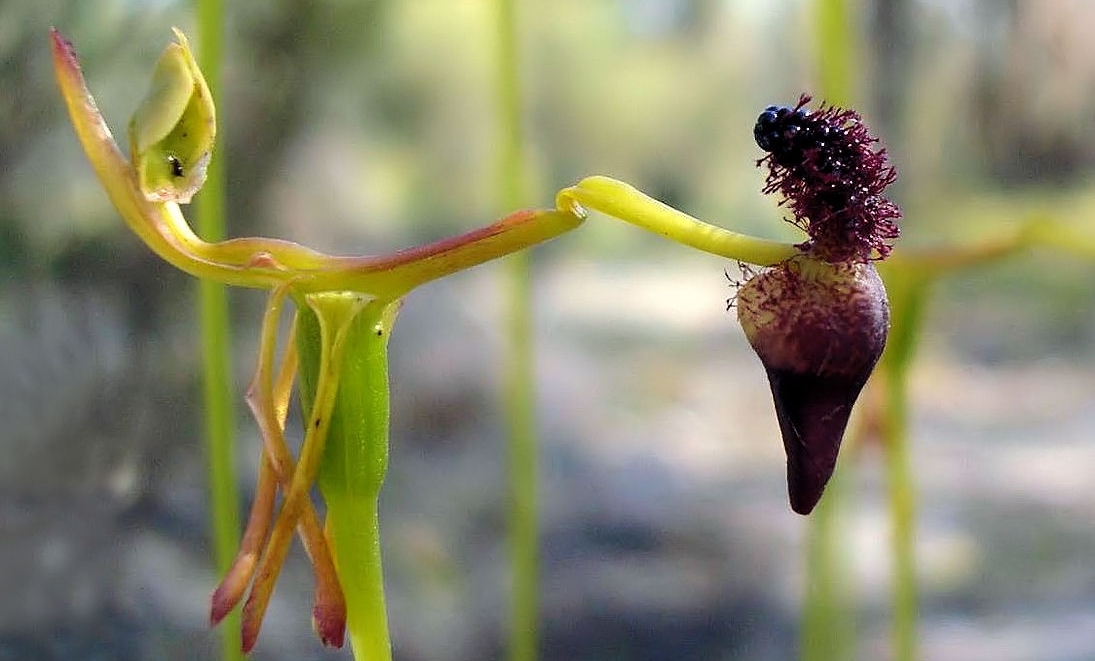
Australia’s hammer orchids employ a different strategy to trap their pollinators. (If you’re noticing an Australian theme here you’re not alone… orchids get weird down under.)
Species like Drakaea elastica and Drakaea livida have flowers that look and smell like female thynnine wasps. Okay, that’s nothing new. But when the male wasp lands and attempts to mate with the dark purple part of the flower (thinking it a female wasp), the hinged structure “hammers” upwards and temporarily pins the wasp against the pollen-containing structures. Yikes.
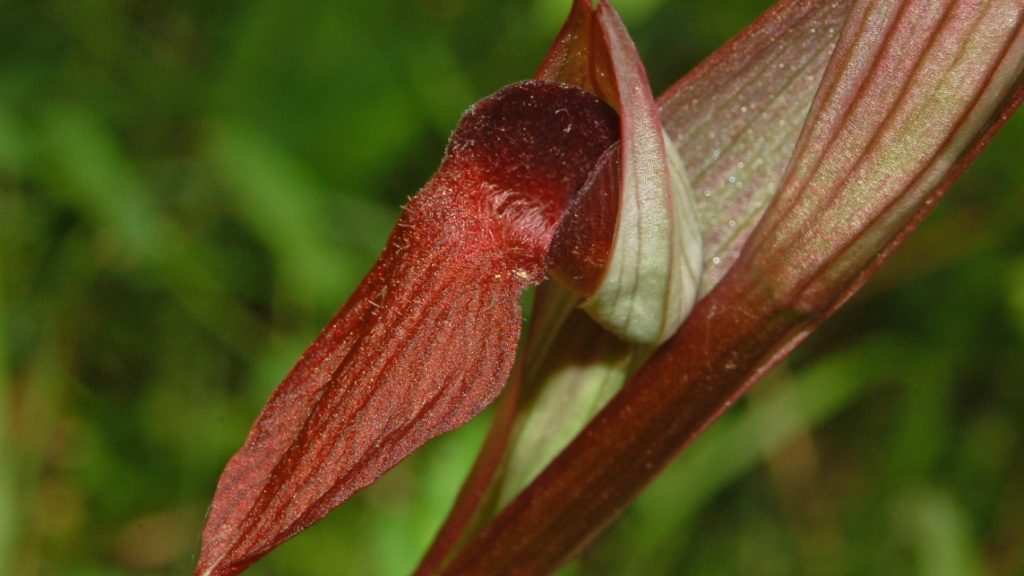
Let Them Stay for Breakfast
Orchids in the Serapias genus take a decidedly less violent approach to attracting pollinators. The flowers of the European Serapias vomeracea orchid form a hollow, enclosed tube where insects (usually beetles and bees) can shelter overnight or during bad weather.

When All Else Fails, Have Sex With Yourself
Instead of evolving elaborate booby-traps, disguises, or scents, the Holcoglossum amesianum simply has sex with itself. Really.
Found on tree trunks in China’s Yunnan province, it’s one of the rare flowering plants that pollinates itself, requiring some admirable floral flexibility to do so. Instead of relying on insects or wind to transport pollen from one plant to another, this orchid evolved an anther (the pollen-laden male part) that can twist a full 360 degrees and insert itself into the stigma cavity (or female part).
Now that’s kinky.
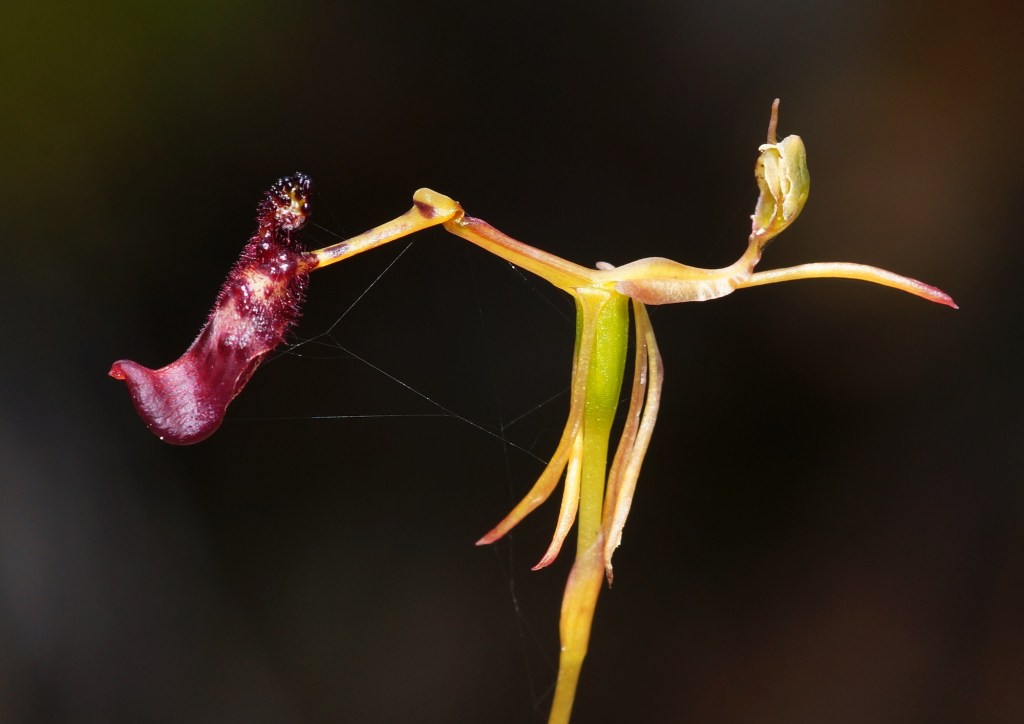



This was such a fun and interesting read! I love the writing style
This is amazing information. I have only admired orchids for their beauty and variety but now my eyes are opened to why they are made in so many ways to attract the perfect pollinators.